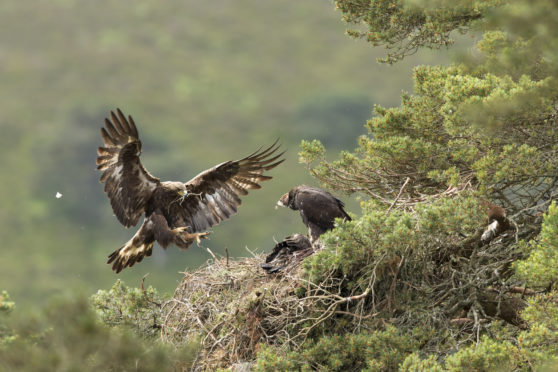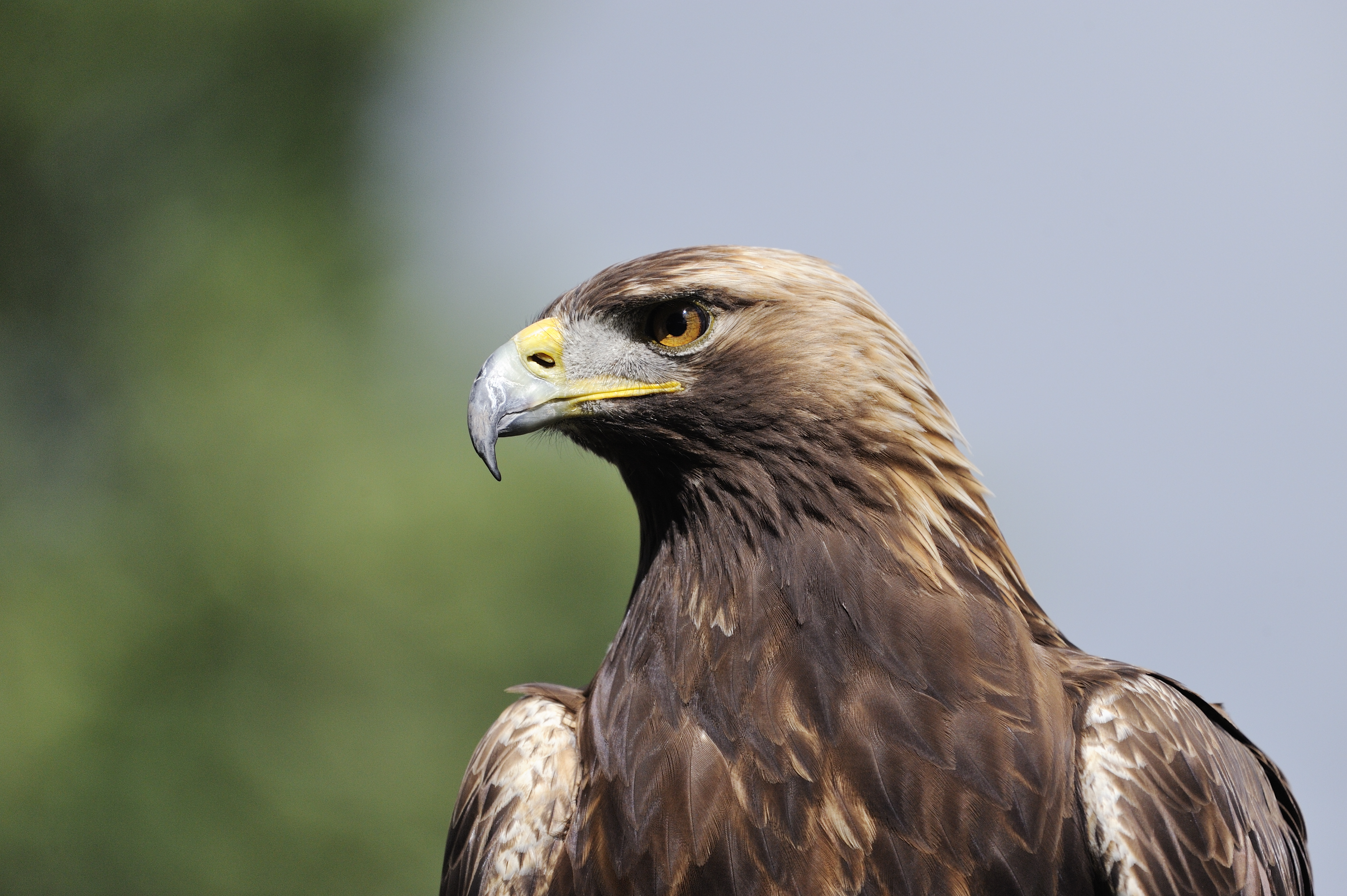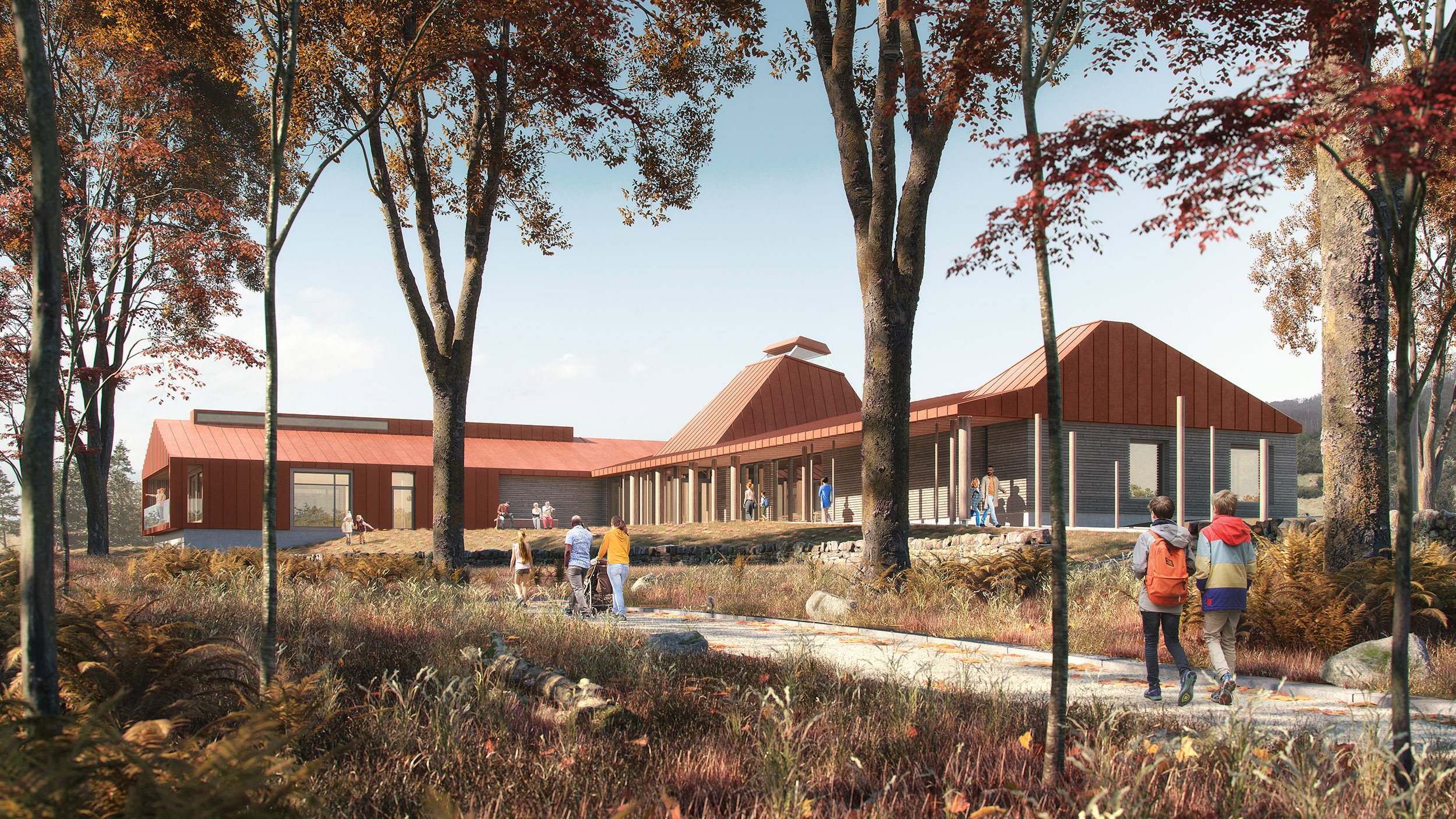The birth of a golden eagle in the Highlands has spurred delight across Scotland.
The eagle chick – which flew from its nest for the first time this week – was born at Trees for Life’s flagship Dundreggan rewilding estate in Glenmoriston ,between Loch Ness and Skye.
It is the first known return of the spectacular bird to breed at the Highlands site in 40 years.
When the nest – which is artificial – was built five years ago conservationists had no idea if adult golden eagles would trust the new habitat.
Doug Gilbert, Trees for Life’s Dundreggan Manager, said the birth of the baby eagle was a “success story beyond our wildest dreams. ”
He said: “I’ve been checking the nest regularly since we built it in 2015, hoping to see evidence that the eagles had returned – and now they have. As golden eagles may use their nesting sites for generations, we’re hoping they are back for the long-term.
“Four decades without golden eagles breeding or establishing themselves in this part of our wild and beautiful Highland glen have been four decades too long.
“When we built the artificial nest, we knew it was in a good location for eagles because we found the remains of an old nest at the site. We’ve been keeping our fingers crossed for the past five years, and it’s wonderful that our efforts have paid off like this.”
Golden eagles – regarded by many people as Scotland’s national bird – are regularly seen over Dundreggan, but until now there has been no sign of them nesting or setting up a territory.
The bird has been making a slow recovery in Scotland – and continues to be threatened by illegal persecution, with annual reports of golden eagles being shot, poisoned or having their nests robbed.
But the fourth national golden eagle survey, published in 2016, showed that Scotland’s population of the birds had increased to 508 pairs, a rise of 15% since the previous survey in 2003.
Dundreggan is home to over 4,000 plant and animal species – including some never recorded in the UK before or once feared extinct in Scotland.
The charity expects to welcome over 50,000 visitors annually – allowing people to explore the wild landscapes, discover Gaelic culture, and learn about the region’s unique wildlife.


